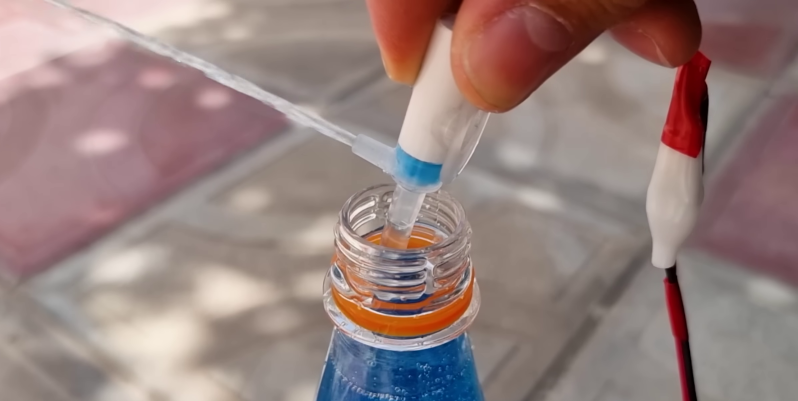There is something inherently fascinating about tiny mechanical devices, especially when you’re used to seeing much larger versions. This is the case with [Penguin DIY]’s tiny centrifugal water pump built from 5 ml syringes.
The pump is powered by a small 8 mm diameter brushed DC motor, likely the same type that is used for small toy-grade quadcopters. The tiny impeller is a section of the syringe’s original plunger, with its cross-shaped body acting as the impeller blades. [Penguin DIY] first experimented with the original plunger seal to protect the motor from water, but it quickly melted from friction with the spinning shaft. Silicone sealant was used instead, and the motor shaft was covered with a layer of oil to prevent the sealant from sticking to it. Then the blob of sealant was flattened with a translucent plastic disc to allow clearance for the impeller.
A hole was drilled in the side of the syringe where the impeller sits, and a nozzle cut from the tip of another syringe was glued in place as the outlet. It’s notoriously difficult to get anything to stick to polypropylene syringes, but [Penguin DIY] says in the comments he was able to find an “organic superglue” that worked. With the motor and impeller inserted, the remaining space was also sealed with silicone.
This tiny pump packs a surprising amount of power, and was able to empty a 1.5 l bottle in about one minute with enough pressure to send the jet of water flying. There are still some issues that need to be addressed, though. With the motor completely sealed, it could burn itself quite quickly. A commenter also mentioned that it might suck water into the motor past the shaft after a hot run, as the air inside the motor cools and contracts. Even so, this little pump might be practical for applications that only require short runs, like watering potted plants. If you need more power you could always 3D print a larger pump.

















Near perfect, thus easy to improve: Move the pump outside to the bottom of the tank. Solves the problem to keep the pump wet and able to create suction. Move the engine outside the syringe and use a shaft. You could use pipe bracket to mount motor and pump case to an old flat heatsink of a PC component.
Might want to check out 50ml bolus syringes. They look ideal for 3/8 hose
Interesting approach.
I’m amazed that solder is good enough to block the holes though.
Could heatsinking with low melting point (BiInSn) alloy work maybe?
Also removable if/when it breaks.
Nice, but not worth the trouble
Maybe the stator of a BLDC can be insulated and the permanent-magnet rotor would run wet, if the bearings tolerate the water. Fish tank pumps use a “magnetic coupler” that isn’t too different.
Most unexpected water pistol